-
 Bitcoin
Bitcoin $116700
2.16% -
 Ethereum
Ethereum $3830
5.76% -
 XRP
XRP $3.082
4.56% -
 Tether USDt
Tether USDt $1.000
0.04% -
 BNB
BNB $777.8
1.96% -
 Solana
Solana $173.2
5.46% -
 USDC
USDC $0.0000
0.02% -
 Dogecoin
Dogecoin $0.2146
6.85% -
 TRON
TRON $0.3384
0.92% -
 Cardano
Cardano $0.7676
5.51% -
 Hyperliquid
Hyperliquid $39.28
4.90% -
 Sui
Sui $3.723
9.07% -
 Stellar
Stellar $0.4164
6.32% -
 Chainlink
Chainlink $17.36
5.78% -
 Bitcoin Cash
Bitcoin Cash $580.9
3.62% -
 Hedera
Hedera $0.2544
5.50% -
 Ethena USDe
Ethena USDe $1.001
0.02% -
 Avalanche
Avalanche $22.81
3.81% -
 Litecoin
Litecoin $120.8
3.60% -
 UNUS SED LEO
UNUS SED LEO $8.956
-0.35% -
 Toncoin
Toncoin $3.311
4.28% -
 Shiba Inu
Shiba Inu $0.00001266
4.15% -
 Uniswap
Uniswap $10.10
5.97% -
 Polkadot
Polkadot $3.786
4.80% -
 Dai
Dai $1.000
0.01% -
 Monero
Monero $280.4
-4.02% -
 Bitget Token
Bitget Token $4.405
1.69% -
 Cronos
Cronos $0.1480
5.13% -
 Pepe
Pepe $0.00001087
5.67% -
 Ethena
Ethena $0.6348
11.62%
Investing in ETH ETFs: A Step-by-Step Guide
ETH ETFs offer regulated exposure to Ethereum’s price without holding crypto directly, ideal for investors seeking integration with traditional markets.
Aug 07, 2025 at 05:44 am
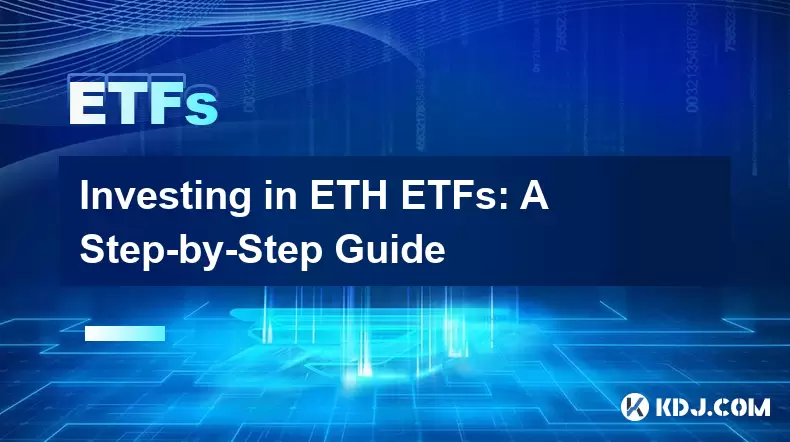
Understanding ETH ETFs and Their Role in Crypto Investment
ETH ETFs, or Ethereum Exchange-Traded Funds, represent a financial product that allows investors to gain exposure to the price movements of Ethereum (ETH) without directly owning the cryptocurrency. These funds are traded on traditional stock exchanges, making them accessible to investors who prefer regulated, brokerage-based platforms over cryptocurrency exchanges. Each share of an ETH ETF typically tracks the value of a specific amount of ETH, often backed by physically held Ethereum or futures contracts, depending on the fund structure.
One of the key advantages of ETH ETFs is regulatory oversight. Unlike direct crypto trading, which occurs on decentralized or semi-centralized platforms with varying degrees of compliance, ETH ETFs are subject to scrutiny by financial regulators such as the U.S. Securities and Exchange Commission (SEC). This oversight can increase investor confidence, especially among institutional players and risk-averse individuals. Additionally, ETH ETFs allow for diversification within traditional portfolios, enabling integration with stocks, bonds, and other securities.
It's essential to distinguish between spot ETH ETFs and futures-based ETH ETFs. Spot ETFs hold actual Ethereum tokens, providing direct price correlation. Futures-based ETFs, on the other hand, invest in Ethereum futures contracts, which may lead to tracking errors due to contango or backwardation in the futures market. As of now, the approval of spot ETH ETFs in the United States has been a topic of regulatory debate, while futures-based options are already available.
Selecting a Brokerage Platform for ETH ETF Trading
To begin investing in ETH ETFs, you must first choose a reputable brokerage platform that supports ETF trading. Not all brokers offer cryptocurrency-related ETFs, so it's crucial to verify availability before opening an account. Major platforms such as Fidelity, Charles Schwab, and ETRADE* have begun listing crypto-linked ETFs, including those tied to Ethereum.
When evaluating a brokerage, consider the following factors:
- Account minimums: Some platforms require initial deposits, while others allow trading with no minimum.
- Trading fees: Look for brokers with low or zero commission fees on ETF trades.
- User interface: A clean, intuitive platform simplifies navigation and order execution.
- Customer support: 24/7 assistance can be vital when resolving technical or transactional issues.
- Regulatory compliance: Ensure the broker is registered with the SEC and a member of the SIPC for added protection.
After selecting a suitable broker, complete the account setup by providing personal information, verifying your identity, and linking a bank account or funding source. Most platforms use multi-factor authentication to enhance security during registration and login.
Researching Available ETH ETFs
Before placing a trade, conduct thorough research on the specific ETH ETFs available in your region. In the United States, examples include the ProShares Ethereum Strategy ETF (EETH) and the VanEck Ethereum ETF (ETHV), both of which are futures-based. These funds publish their holdings, expense ratios, and performance data regularly.
Key metrics to analyze:
- Expense ratio: This annual fee, expressed as a percentage, impacts long-term returns. Lower ratios are generally preferable.
- AUM (Assets Under Management): Higher AUM often indicates investor confidence and better liquidity.
- Liquidity and trading volume: ETFs with high daily trading volumes allow for easier entry and exit without significant price slippage.
- Underlying assets: Confirm whether the ETF is backed by spot Ethereum or futures contracts.
- Tracking accuracy: Compare the ETF’s performance against the price of ETH over time to assess how closely it follows the underlying asset.
You can access this information through the ETF issuer’s official website, financial data platforms like Yahoo Finance or Bloomberg, or your brokerage’s research tools. Reading the fund’s prospectus is also recommended, as it contains detailed disclosures about risks, fees, and investment strategy.
Placing Your First ETH ETF Trade
Once you’ve funded your brokerage account and selected an ETH ETF, you’re ready to execute a trade. Follow these steps carefully:
- Log in to your brokerage account and navigate to the trading dashboard.
- Enter the ticker symbol of the ETH ETF (e.g., EETH or ETHV).
- Choose the order type: market order executes immediately at the current price, while a limit order allows you to set a maximum price you’re willing to pay.
- Specify the number of shares you wish to purchase.
- Review the order details, including estimated cost and fees.
- Confirm and submit the trade.
After execution, the shares will appear in your portfolio. You can monitor their value in real time and set up price alerts to stay informed of market movements. Some investors choose to use dollar-cost averaging (DCA), where they invest a fixed amount at regular intervals to reduce the impact of volatility.
Monitoring and Managing Your ETH ETF Investment
Owning an ETH ETF is not a set-and-forget strategy. Regular monitoring ensures your investment aligns with your financial goals. Check your portfolio at least weekly to assess performance relative to the broader market and Ethereum’s price action.
Use tools provided by your broker to:
- View total return, including price changes and any dividends (though most ETH ETFs do not pay dividends).
- Analyze sector allocation if the ETF is part of a larger portfolio.
- Rebalance holdings if your risk tolerance or investment objectives change.
Stay updated on regulatory developments, as announcements from the SEC or other agencies can impact ETF approval status and market sentiment. Additionally, follow news related to Ethereum’s network upgrades, such as scalability improvements or changes in staking rewards, as these can influence long-term price trends.
Tax Implications and Reporting Requirements
Investing in ETH ETFs carries tax obligations that differ from direct cryptocurrency ownership. Since ETH ETFs are treated as securities, they are subject to standard capital gains tax rules. When you sell shares for a profit, you may owe taxes on the gain, with rates depending on your income level and how long you held the asset.
Short-term gains (held for one year or less) are taxed as ordinary income, while long-term gains (held over one year) qualify for lower tax rates. Your brokerage will issue a Form 1099-B at year-end, detailing your transactions and proceeds, which must be reported on your tax return.
Keep accurate records of:
- Purchase and sale dates
- Number of shares
- Prices paid and received
- Associated fees
Consult a tax professional familiar with crypto-related investments to ensure compliance and optimize your tax strategy.
Frequently Asked Questions
Can I convert my ETH ETF shares back into actual Ethereum?
No, ETH ETF shares are securities and cannot be redeemed for physical Ethereum. They represent ownership in a fund, not the cryptocurrency itself.
Are ETH ETFs safer than buying ETH on an exchange?
For some investors, yes. ETH ETFs operate within regulated financial systems, reducing counterparty and custody risks associated with crypto exchanges. However, they come with management fees and may not track ETH perfectly.
Do ETH ETFs pay dividends?
Most ETH ETFs do not distribute dividends. Ethereum’s staking rewards are typically retained within the fund to cover expenses or enhance returns, not passed directly to shareholders.
What happens if the ETF issuer goes out of business?
ETF assets are held in trust and are separate from the issuer’s balance sheet. In the event of issuer insolvency, the fund’s assets would be liquidated and distributed to shareholders, minimizing loss.
Disclaimer:info@kdj.com
The information provided is not trading advice. kdj.com does not assume any responsibility for any investments made based on the information provided in this article. Cryptocurrencies are highly volatile and it is highly recommended that you invest with caution after thorough research!
If you believe that the content used on this website infringes your copyright, please contact us immediately (info@kdj.com) and we will delete it promptly.
- BlockchainFX, Bitcoin Swift, Crypto Presales: What's the Hype?
- 2025-08-07 19:10:13
- SHIB Community at Crossroads: Shytoshi Kusama's Leadership Under Scrutiny as Elections Loom
- 2025-08-07 18:30:13
- IREN Overtakes: A New King in the Bitcoin Miner Hashrate Race?
- 2025-08-07 16:31:29
- Memecoins Mania: Whales Eye Pepe Dollar (PEPD) as Bonk Cools Off, While MoonBull Hogs the Spotlight!
- 2025-08-07 16:51:17
- Unilabs, PEPE, and Investment Risk: Navigating the Crypto Hype
- 2025-08-07 16:31:29
- Meme Coin Mania: Rug Pulls, CZ-Inspired Tokens, and the Wild West of Crypto
- 2025-08-07 16:57:14
Related knowledge
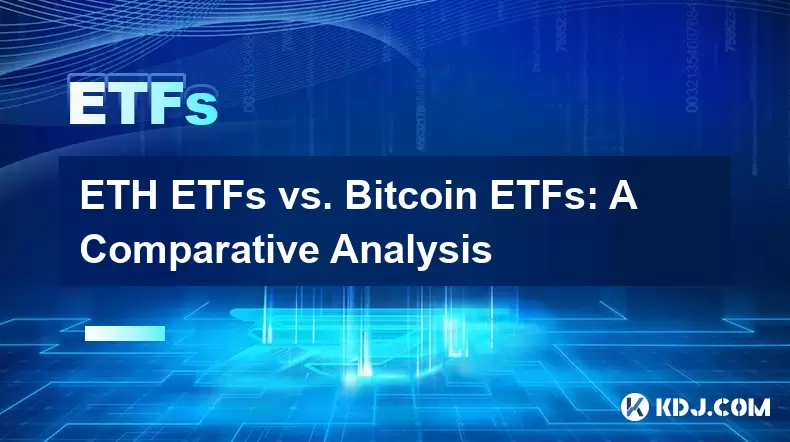
ETH ETFs vs. Bitcoin ETFs: A Comparative Analysis
Aug 07,2025 at 02:08pm
Understanding the Fundamentals of ETH and Bitcoin ETFsExchange-Traded Funds (ETFs) have become a mainstream financial instrument for gaining exposure ...
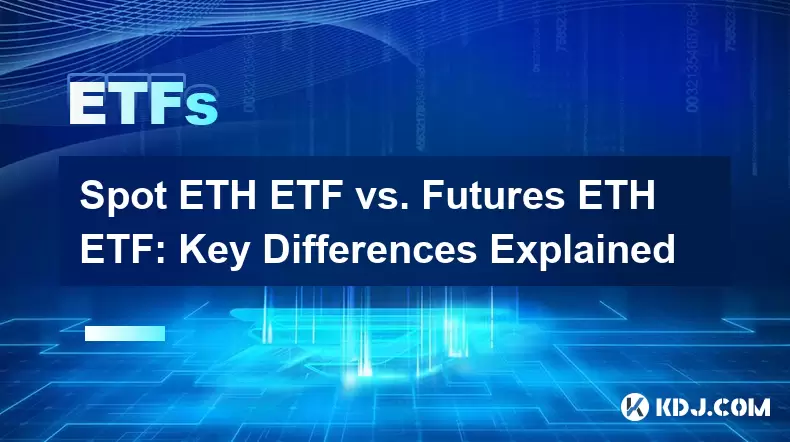
Spot ETH ETF vs. Futures ETH ETF: Key Differences Explained
Aug 07,2025 at 07:31am
Understanding Spot ETH ETFsA Spot ETH ETF is an exchange-traded fund that directly holds Ethereum (ETH) as its underlying asset. This means the fund p...
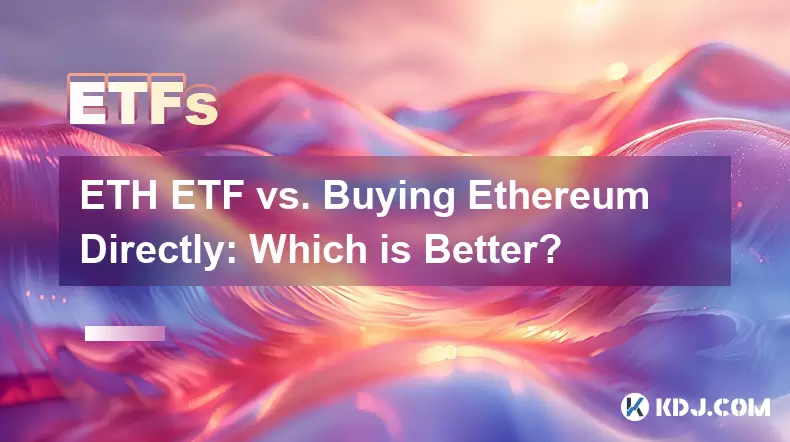
ETH ETF vs. Buying Ethereum Directly: Which is Better?
Aug 07,2025 at 01:36am
Understanding ETH ETFs and Direct Ethereum OwnershipWhen evaluating ETH ETF vs. Buying Ethereum Directly, it's essential to understand what each optio...

Investing in ETH ETFs: A Step-by-Step Guide
Aug 07,2025 at 05:44am
Understanding ETH ETFs and Their Role in Crypto InvestmentETH ETFs, or Ethereum Exchange-Traded Funds, represent a financial product that allows inves...
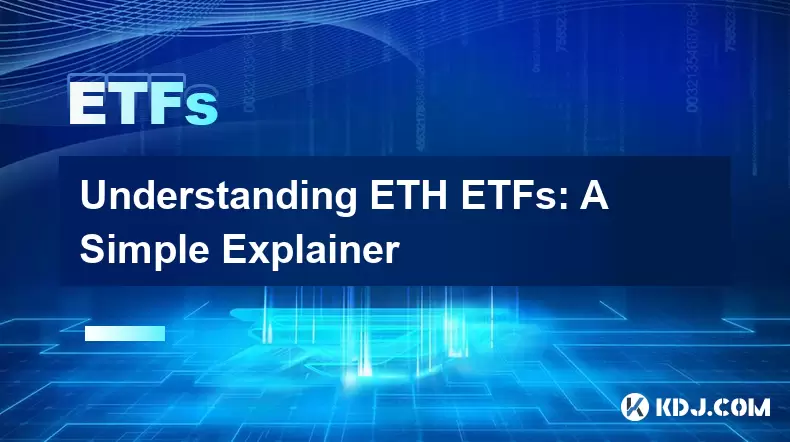
Understanding ETH ETFs: A Simple Explainer
Aug 07,2025 at 09:35am
What Are ETH ETFs and How Do They Work?ETH ETFs, or Ethereum Exchange-Traded Funds, are investment vehicles that allow investors to gain exposure to t...
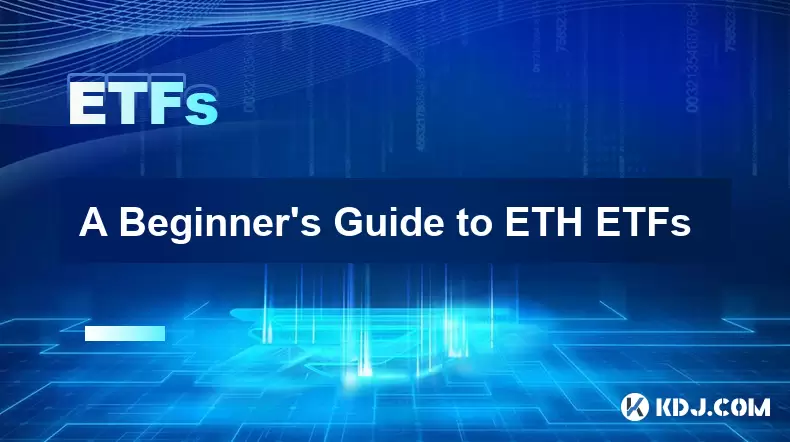
A Beginner's Guide to ETH ETFs
Aug 07,2025 at 06:38am
Understanding What an ETH ETF IsAn ETH ETF stands for Ethereum Exchange-Traded Fund, a financial product that allows investors to gain exposure to the...

ETH ETFs vs. Bitcoin ETFs: A Comparative Analysis
Aug 07,2025 at 02:08pm
Understanding the Fundamentals of ETH and Bitcoin ETFsExchange-Traded Funds (ETFs) have become a mainstream financial instrument for gaining exposure ...

Spot ETH ETF vs. Futures ETH ETF: Key Differences Explained
Aug 07,2025 at 07:31am
Understanding Spot ETH ETFsA Spot ETH ETF is an exchange-traded fund that directly holds Ethereum (ETH) as its underlying asset. This means the fund p...

ETH ETF vs. Buying Ethereum Directly: Which is Better?
Aug 07,2025 at 01:36am
Understanding ETH ETFs and Direct Ethereum OwnershipWhen evaluating ETH ETF vs. Buying Ethereum Directly, it's essential to understand what each optio...

Investing in ETH ETFs: A Step-by-Step Guide
Aug 07,2025 at 05:44am
Understanding ETH ETFs and Their Role in Crypto InvestmentETH ETFs, or Ethereum Exchange-Traded Funds, represent a financial product that allows inves...

Understanding ETH ETFs: A Simple Explainer
Aug 07,2025 at 09:35am
What Are ETH ETFs and How Do They Work?ETH ETFs, or Ethereum Exchange-Traded Funds, are investment vehicles that allow investors to gain exposure to t...

A Beginner's Guide to ETH ETFs
Aug 07,2025 at 06:38am
Understanding What an ETH ETF IsAn ETH ETF stands for Ethereum Exchange-Traded Fund, a financial product that allows investors to gain exposure to the...
See all articles

























































































